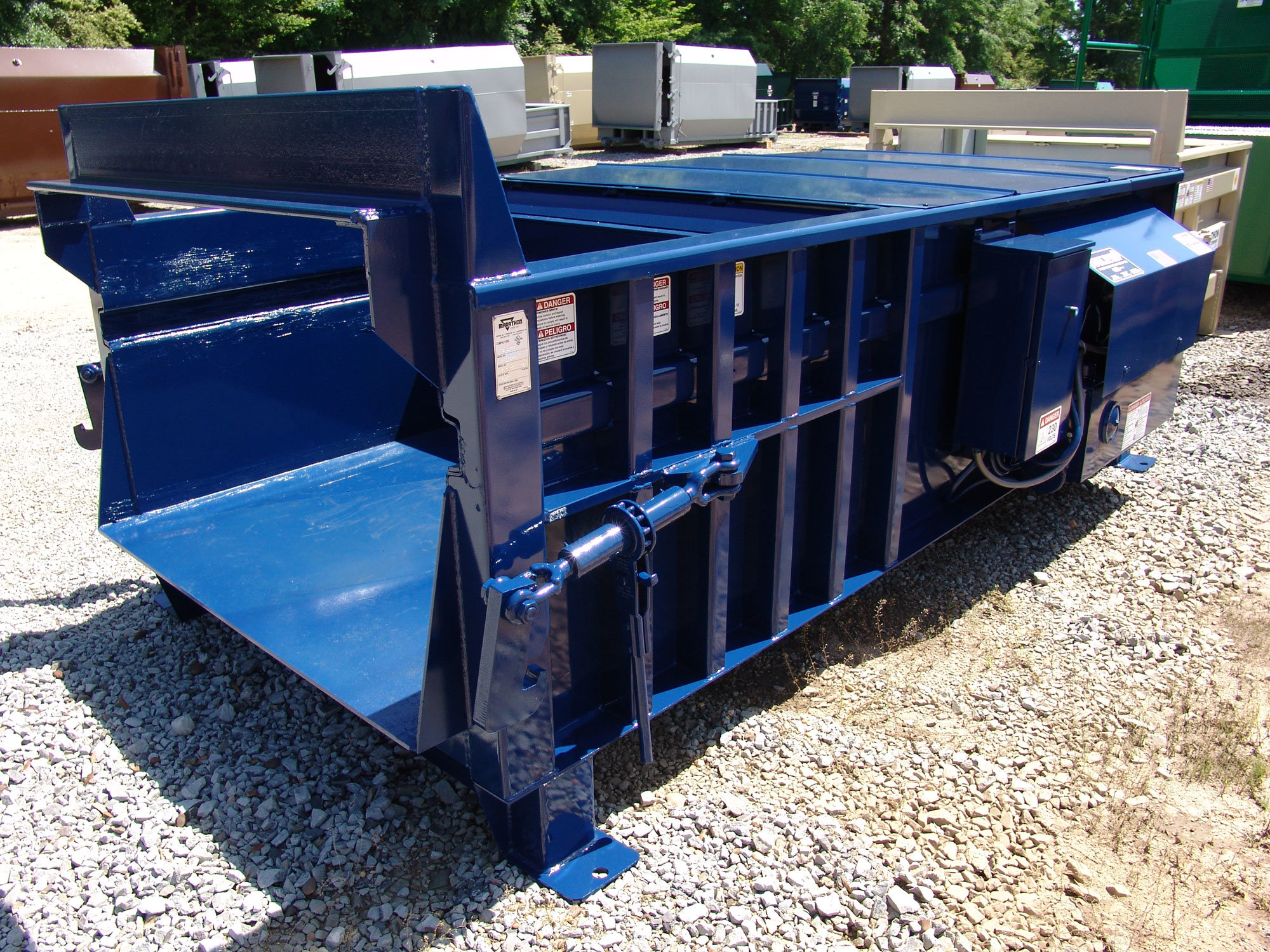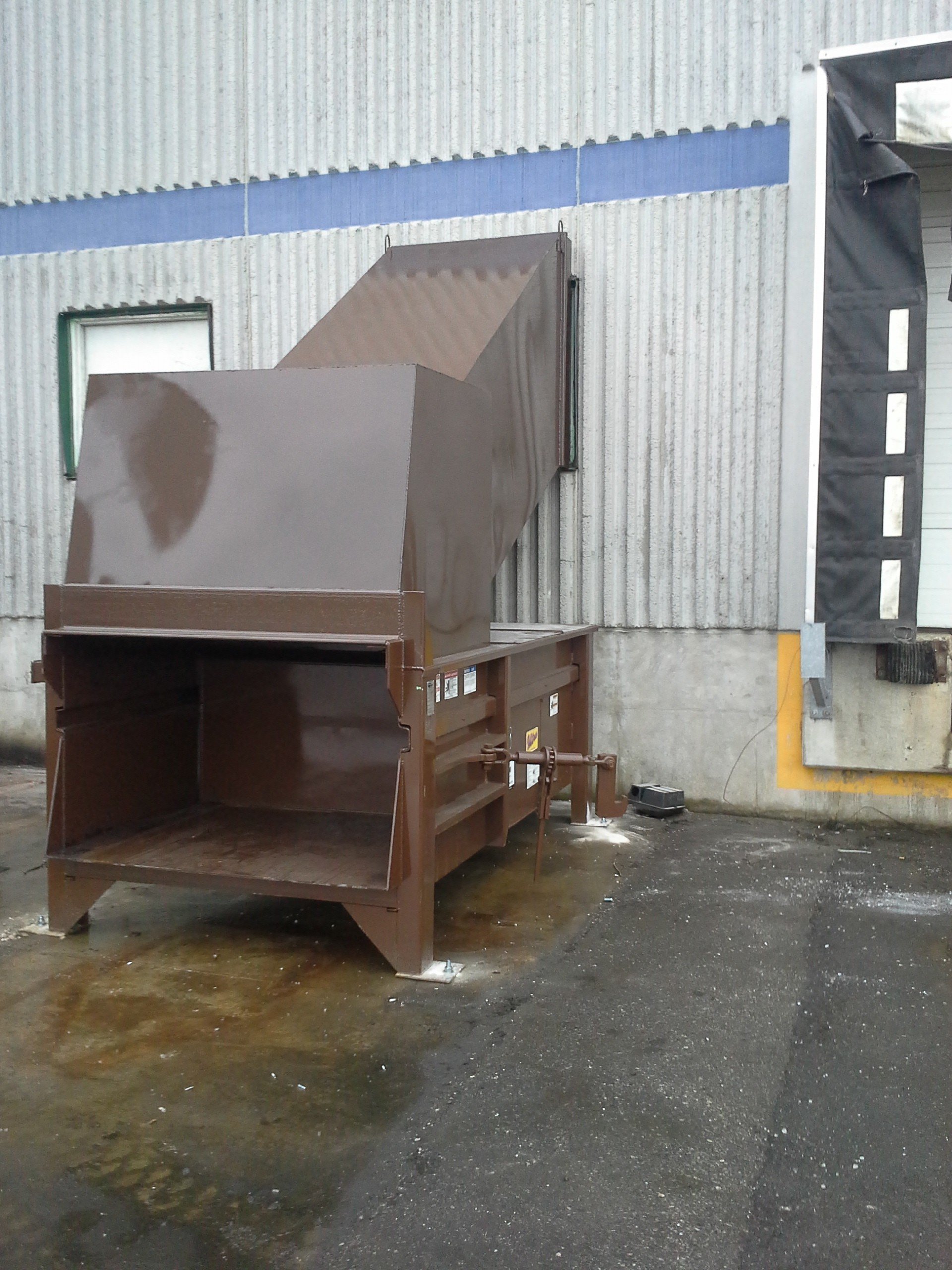The significance of Commercial garbage compaction equipment for long-term waste goals
Understanding the Various Uses of Waste Equipment in the Recycling Industry
The reusing sector counts heavily on specialized waste devices to enhance processing and recovery. Each device, from shredders to balers, offers a distinctive objective that boosts total performance. Comprehending these functions is essential for boosting sustainability efforts. Commercial garbage compaction equipment. As modern technology breakthroughs, brand-new advancements arise, guaranteeing to transform conventional practices. This development increases essential questions regarding the future of waste monitoring and its effect on ecological conservation. What adjustments lie in advance for this essential market?
The Function of Shredders in Product Processing
Shredders play an essential duty in the recycling industry by efficiently refining various sorts of waste materials. These devices are created to minimize huge items, such as plastics, steels, and organic waste, right into smaller, convenient items. This dimension decrease is vital for succeeding recycling processes, as it enables simpler handling and sorting. In addition to facilitating recycling, shredders boost safety and security by minimizing the danger of injury related to taking care of large waste products.
Shredders add to ecological sustainability by ensuring that products are processed in a way that makes best use of source recovery. They can manage a varied variety of products, making them versatile devices in waste management facilities. The reliable procedure of shredders not only enhances the reusing procedure yet also boosts the total effectiveness of waste diversion efforts, advertising a circular economy. Their value in product handling can not be overemphasized, as they serve as a foundational step in the direction of sustainable waste monitoring practices.

How Balers Enhance Effectiveness in Waste Administration
Balers significantly boost performance in waste monitoring by condensing various products into bundles, which simplifies storage and transport. By pressing recyclables such as cardboard, plastics, and steels, balers substantially minimize the volume of waste. This compression not only makes the most of area in reusing facilities yet also decreases the number of trips required to transfer materials, bring about reduced gas expenses and decreased environmental effect.
Balers add to improved safety and security in waste monitoring procedures. Portable bales are easier to pile and deal with, decreasing the danger of mishaps associated with loose materials. The consistent size of bundles enables much more reliable filling and dumping procedures, streamlining procedures within recycling facilities. Furthermore, balers can boost the total top quality of recyclables, as correctly compacted products are less likely to be polluted. In general, balers play a crucial role in enhancing waste management techniques, advertising sustainability in the recycling sector.
Conveyor Solutions: Streamlining the Recycling Refine
Incorporating innovative equipment like balers considerably boosts waste management operations, however the performance of the recycling process is better boosted via using conveyor systems. These systems play an essential duty in the smooth transport of products within recycling facilities. By facilitating the motion of different waste kinds, conveyor systems lessen manual handling and minimize the threat of contamination during the reusing process.
Conveyor systems can be personalized to fit the unique designs and functional needs of reusing facilities. Their capacity to operate constantly permits for a stable flow of products, improving performance and guaranteeing that sorting and processing tools obtains a constant supply.
Furnished with functions like adjustable rates and automated controls, conveyor systems can enhance the flow of materials, greatly boosting general effectiveness (Commercial garbage compaction equipment). As a result, these systems are essential in modern recycling procedures, simplifying processes and contributing to reliable waste administration
Sorting Devices: The Secret to Material Healing
Sorting makers are necessary elements in the recycling industry, considerably boosting the performance of product recuperation. These makers play a crucial duty in the splitting up of different recyclable materials, permitting a streamlined process that maximizes resource extraction. By utilizing check out here innovative modern technologies, such as Click This Link optical sensors and air classifiers, sorting devices can recognize and categorize products based upon their weight, size, and composition. This ability guarantees that steels, plastics, and paper items are efficiently separated, minimizing contamination and boosting the high quality of recycled output.
The procedure of arranging makers significantly decreases the dependence on hand-operated labor, which can be both taxing and vulnerable to errors - Commercial garbage compaction equipment. Additionally, the automation offered by these makers increases the total recycling process, resulting in higher throughput and enhanced operational effectiveness. Arranging devices are crucial in attaining lasting waste administration goals, enabling the recycling industry to effectively recoup valuable products while lowering landfill dependence.
Innovations in Waste Tools for a Lasting Future
Recent improvements in waste tools are driving the reusing industry toward a much more lasting future. Technologies such as automated sorting systems, which make use of fabricated intelligence and device learning, boost effectiveness by precisely determining and dividing recyclables. This leads to higher healing rates and decreased contamination. Furthermore, growths in condensing modern technology allow for a lot more reliable transportation of products, lessening carbon impacts during transportation.
Additionally, advancements in shredding devices boost the handling of intricate products, making it possible for the recycling of items that were as soon as regarded non-recyclable. The assimilation of eco-friendly power resources, like solar energy, in waste handling facilities further adds to sustainability objectives. Additionally, technologies in waste-to-energy modern technologies and biodegradable products are improving the landscape of waste monitoring. Collectively, these developments signify a transformative shift within the reusing industry, promoting not only environmental management yet additionally economic practicality for future generations.
Frequently Asked Concerns
What Kinds Of Materials Can Waste Devices Handle?
The types of materials waste equipment can deal with include plastics, steels, paper, glass, and organic waste. Each equipment kind is created for particular products, enhancing efficiency and efficiency in arranging and processing various waste streams.
How Typically Should Waste Devices Be Preserved?

Are There Safety Interest In Utilizing Waste Equipment?
Safety and security problems with using waste devices consist of possible injuries from mechanical breakdowns, direct exposure to harmful products, and insufficient training. Proper upkeep, normal inspections, and employee education are vital to minimize these dangers efficiently in any type of setting.
What Is the Ordinary Lifespan of Recycling Devices?
The typical lifespan of reusing tools typically varies from 10 additional hints to twenty years, relying on factors such as use intensity, upkeep methods, and technical innovations, which can significantly affect toughness and efficiency with time.
How Is Waste Tools Powered in Recycling Facilities?
Waste tools in reusing centers is usually powered by electrical power, though some equipments may make use of alternative power sources like all-natural gas or diesel. This power enables efficient handling and makeover of products for reusing functions.
Shredders play an important role in the reusing industry by successfully processing numerous kinds of waste materials. They can take care of a diverse range of products, making them functional tools in waste administration centers. Balers greatly enhance performance in waste administration by condensing different products into bundles, which simplifies storage space and transport. The types of products waste tools can handle include plastics, metals, paper, glass, and organic waste. Security problems with using waste equipment consist of prospective injuries from mechanical breakdowns, exposure to dangerous materials, and insufficient training.